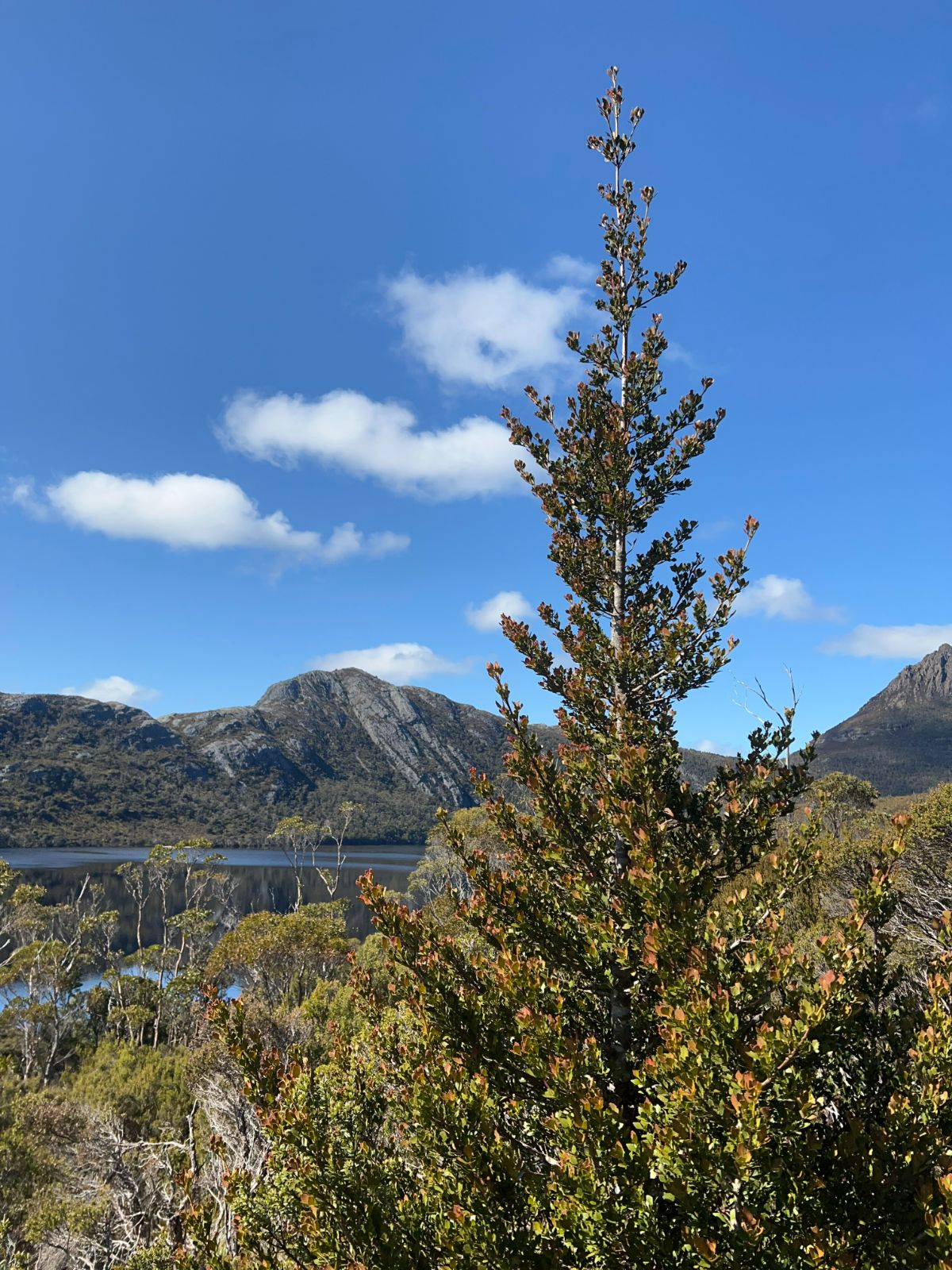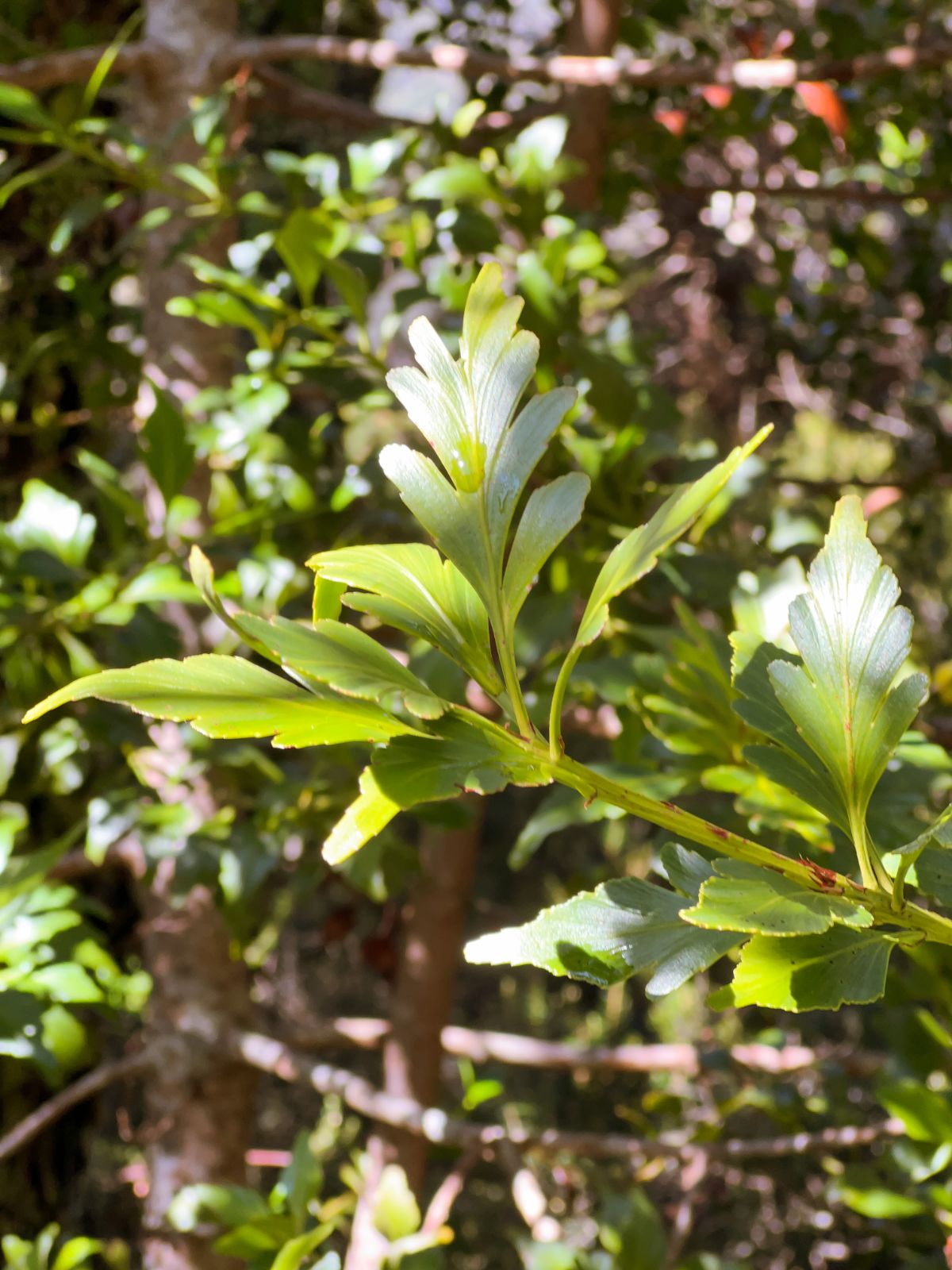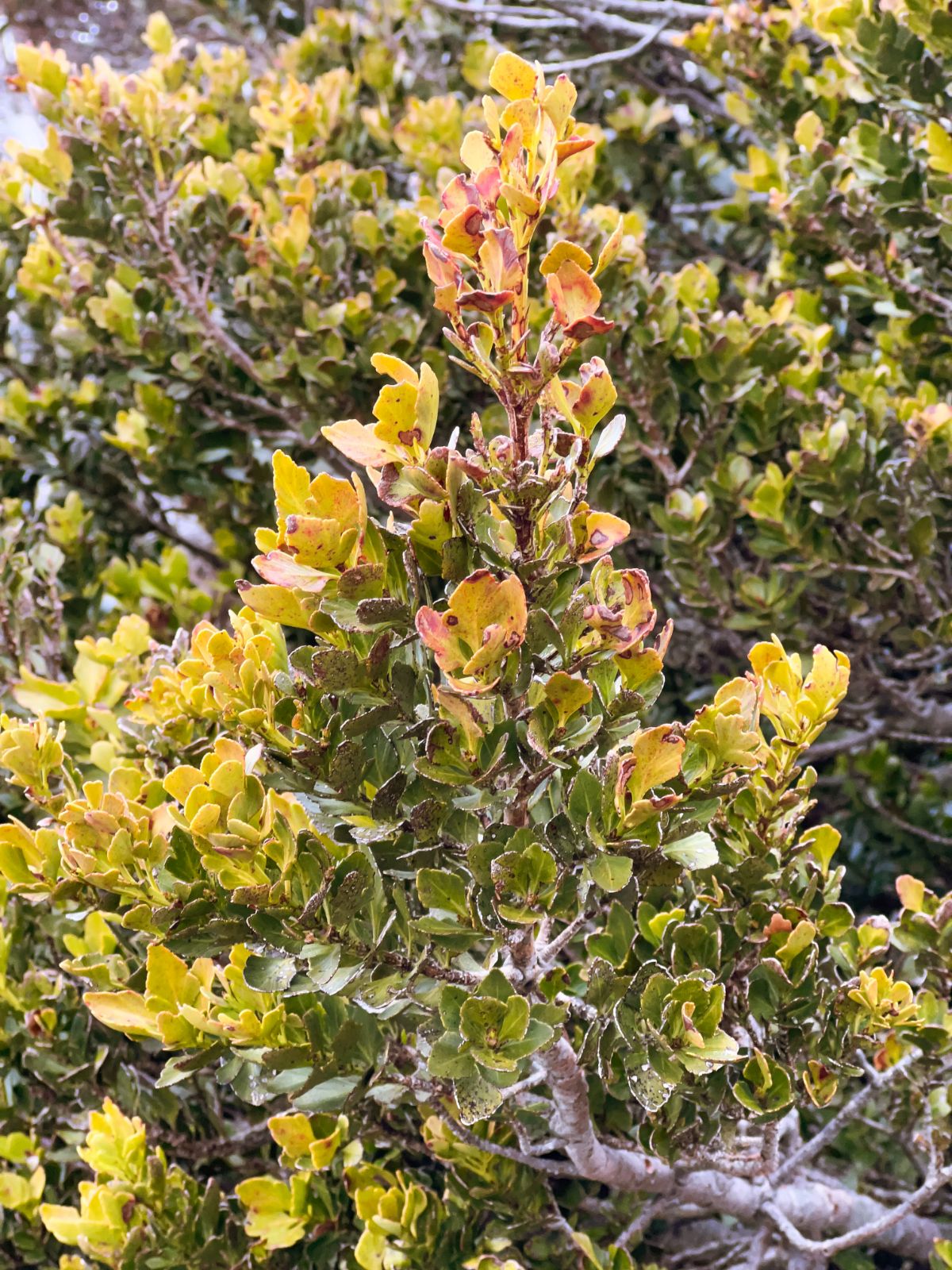Phyllocladus aspleniifolius
Credits
Article from Bean's Trees and Shrubs Hardy in the British Isles
Recommended citation
'Phyllocladus aspleniifolius' from the website Trees and Shrubs Online (treesandshrubsonline.
Genus
Synonyms
- Podocarpus asplenifolius Labill.
- Phyllocladus rhomboidalis L.C. & A. Rich.
An evergreen tree up to 60 ft high at low elevations but dwarfed and bushy at high altitudes; trunk usually slender; all the parts glabrous. ‘Leaves’ irregularly arranged on the branchlets and resembling in this respect those of P. alpinus, but differing from the pinnately arranged ones of P. trichomanoides and P. glaucus; nor are the branchlets strictly whorled as in these two species, although often clustered. The ‘leaves’ have the usual rhomboid or diamond shape seen in this genus, being wedge-shaped and entire at the base, the upper part also tapering to the apex but always toothed and often lobed as well – sometimes deeply so; they vary from 3⁄4 to 23⁄4 in. in length and from 1⁄3 to 1 in. in width, dark dull green.
Native of Tasmania where it is described as being a ‘beautiful tree, growing to a great height but not attaining any great size of trunk; found in rich, humid situations, and abundant on the Hampshire and Surrey hills’. It has long been cultivated in England. A fine tree once grew in the pinetum at Bicton in S. Devon, a shapely, slender pyramid 32 ft high. It was probably the most admirable example of phyllocladus ever seen in the British Isles, but it died many years ago. This species is most nearly allied to the New Zealand P. alpinus, especially in the irregularly arranged, not pinnate, branchlets, but is a finer, free-growing tree with larger foliage.



